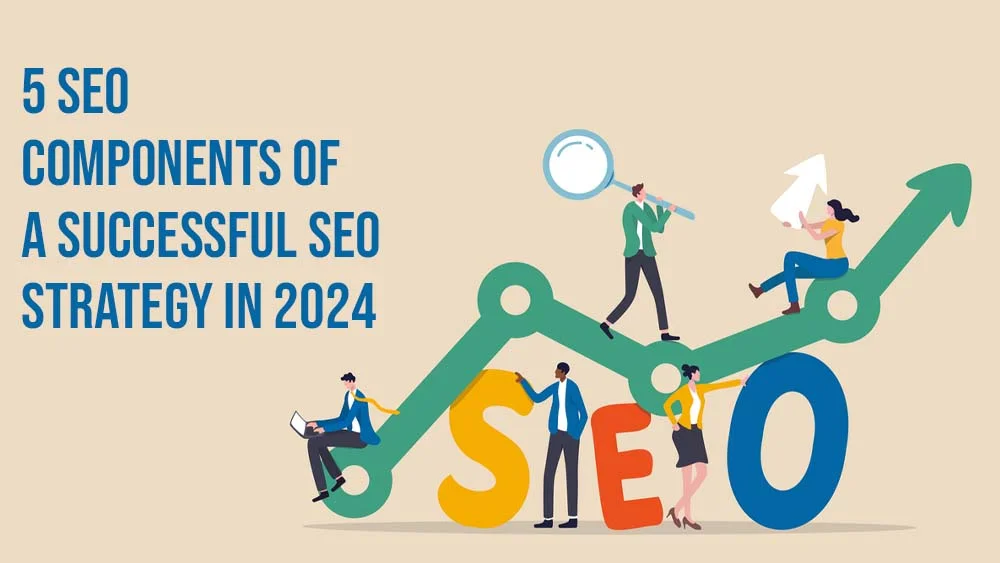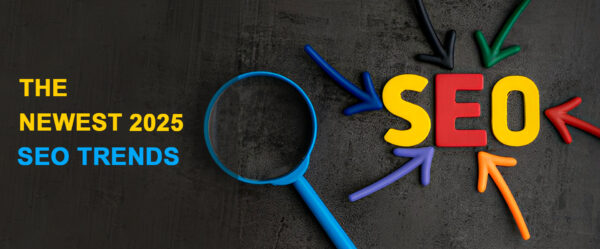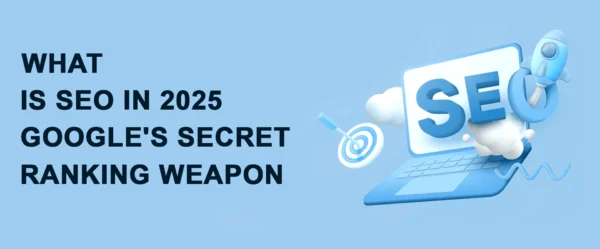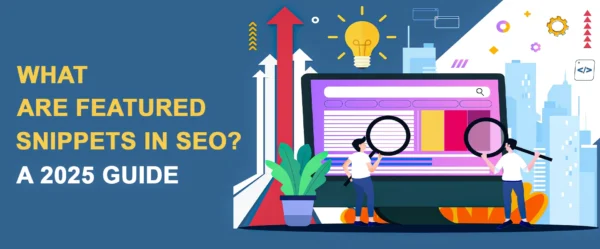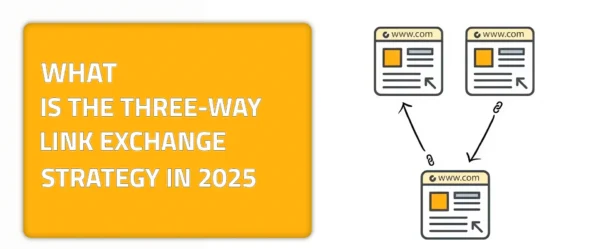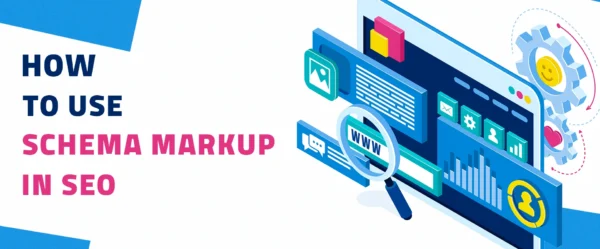The secret of a successful SEO strategy is one that is known to be all about the keywords. But have you ever paused and asked yourself, Is there something that is more that is kept behind the scenes? The answer is that we’re evolving each day and so is our digital landscape. That is why we have to keep in mind that the strategies that are being presented to us will have a variety of ways to execute them and not just one. SEO components vary and this guide is dedicated to this specific variety.
In this guide, we will delve into the various SEO components that are in the current market and understand each one of them that can help us create a successful SEO strategy. The main five components that we will discuss are the usage of long-tail keywords, the content quality and value, site speed and loading speed, a user-friendly design, and a responsive website design. These five components are the main ones that are essential enough to help you build an approach that is both relevant and driven by successful outcomes.
SEO Components: The Usage of Long-Tail Keywords That Are Relative Enough
The long-tail keyword method is one that makes you think out of the box a little when it comes to keywords and their implementation. If you’re still pouring your focus on generic and short keywords, then it’s time to take evolution forward and embrace the long-tail keyword method. What is that method all about? Let me tell you. Long-tail keywords are specific and precise keywords that help you target people who look for something specific. The reason why people use these keywords is because they are way less competitive in terms of phrases. Users and internet surfers who have and provide clear search intents are the ones that you should create and use this method for.
For example, instead of searching “Best iPhone,” people can search “Best iPhone to Buy for a Low Budget.” This is more specific. Something that is narrowed down to cost-efficiency and filtered towards the iPhone that suits budgets that are low. Long-tail keywords narrow your audience; however, they increase the likelihood of conversions.
How can you find these long-tail keywords? Start by understanding your target audience and putting yourself in their shoes. Tools like Google’s Keyword Planner or SEMrush can help identify these more specific terms. The beauty of long-tail keywords is that they attract a highly targeted audience, often resulting in higher engagement and conversions. Plus, they’re generally easier to rank for, as competition is lower. Incorporating long-tail keywords into your content will help you align with your user intent while improving your chances of ranking higher in search engine result pages (SERPs).
SEO Components: Content Quality, Depth, and Value
Ever wondered why some websites rank higher than others, even if they cover the same topic? The answer often lies in the depth and quality of their content. Search engines like Google have evolved to reward content that thoroughly answers users’ questions, providing value beyond superficial information. Imagine with me that you’re reading an article about a certain Brioche recipe that gives you the ingredients but doesn’t tell you how much you should add from each and every ingredient you have been given. Frustrating doesn’t even begin to explain the feeling that I get when I read these articles.
That is why your content has to be of great value—one that offers people help and knowledge and doesn’t just contain some empty words. So, how do you create in-depth content? Think about covering all aspects of a topic—what, why, how—and ensure that your article is comprehensive. This is one of the top SEO components that you should focus on and pay attention to.
But it’s not just about length. Quality matters more than ever. Does your content provide unique insights? Does it reference credible sources or include examples to support your points? By offering detailed, well-researched content, you’re not only boosting your SEO but also enhancing the user experience. And the better the experience, the longer users stay on your site, signaling to Google that your content is valuable. In the end, producing in-depth, high-quality content creates a win-win situation: users get the information they need, and you enjoy improved search rankings and higher engagement.
SEO Components: Site Page Speed: Loading and Navigation
Is your website fast enough to keep users happy, satisfied, and engaged? In today’s fast-paced and most digitized world, a slow website can be the ultimate irritation for someone that pays a lot to get decent loading speed. Studies show that users expect a page to load in under three seconds, and anything longer can lead to higher bounce rates. So how does this affect SEO? Google has confirmed that site speed is a ranking factor, meaning a slow-loading website could push you lower in search results. Yes, it might not be one of the top ranking factors, but if Google says it is, then it focuses on it and will treat your website with their evaluation of it’s speed.
The question still remains: How can you speed things up? Start by optimizing your images and compressing large files. Using tools like Google PageSpeed Insights can give you a clear picture of what’s slowing down your site. Minifying your CSS and JavaScript files is another quick solution to opt for. The faster your website, the better the user experience. It is a win-win situation. One that leads to a higher engagement and satisfaction rate. Plus, a fast website helps with mobile SEO, as many users access sites from their phones. Speed isn’t just about convenience—it’s about staying competitive in the SEO game.
Design Your Website: Make it User-Friendly and Focused
What does it mean to have a user-focused design? Simply put, it’s all about creating a seamless, intuitive experience that caters to your visitors’ needs. Think of your website as a journey—if users can’t navigate easily or find what they’re looking for, they’ll likely leave. This impacts both user satisfaction and your search engine rankings. But how do you create a user-focused design? It starts with understanding your audience. What are they looking for when they visit your site? Are the calls-to-action (CTAs) clear and accessible?
Design elements like easy navigation, clear headings, and readable fonts are essential. But it goes beyond aesthetics—your site’s functionality must align with user intent. If your target audience is looking for quick information, make sure that it’s front and center. If they’re browsing for products, ensure that your e-commerce platform is easy to navigate. Even small changes, like improving menu structure or enhancing site accessibility, can make a big difference.
When users find your site easy to use, they stay longer, engage more, and are more likely to return. This sends positive signals to search engines, improving your SEO over time. In short, user-focused design isn’t just good for visitors—it’s a crucial component of your overall SEO strategy.
Create a Responsive and Visual Design For Your Website
Is your website optimized for all devices? In 2024, having a responsive design is no longer optional. This is one of the top SEO components that is of the essence. With mobile traffic surpassing desktop usage, Google has shifted to mobile-first indexing, meaning it primarily uses the mobile version of your site for ranking. But what exactly is responsive design? It’s the ability of your website to adapt and look great on any screen size, whether it’s a desktop, tablet, or smartphone.
Why is this important for SEO? A non-responsive site can frustrate mobile users, leading to higher bounce rates and lower user engagement. Search engines like Google penalize sites that don’t offer a smooth mobile experience, making responsiveness a critical ranking factor. So, how do you achieve this? Start by using a mobile-responsive framework or theme, and test your website on multiple devices to ensure a seamless experience. By focusing on responsive design, you’re not only improving usability but also future-proofing your website for continued SEO success as mobile usage grows.
Final Words to Wrap Things Up!
Now that you know the five main SEO components that will help you craft a creative and successful SEO strategy for your website, let us talk some business and let me introduce you to a platform that will help you understand SEO better. linkexchange.ai is a platform that will introduce you to great services that will help you increase your exposure and visibility rate. Broaden your SEO horizons and get to understand how it can take your website to a whole new level of evolution and enhancements.


